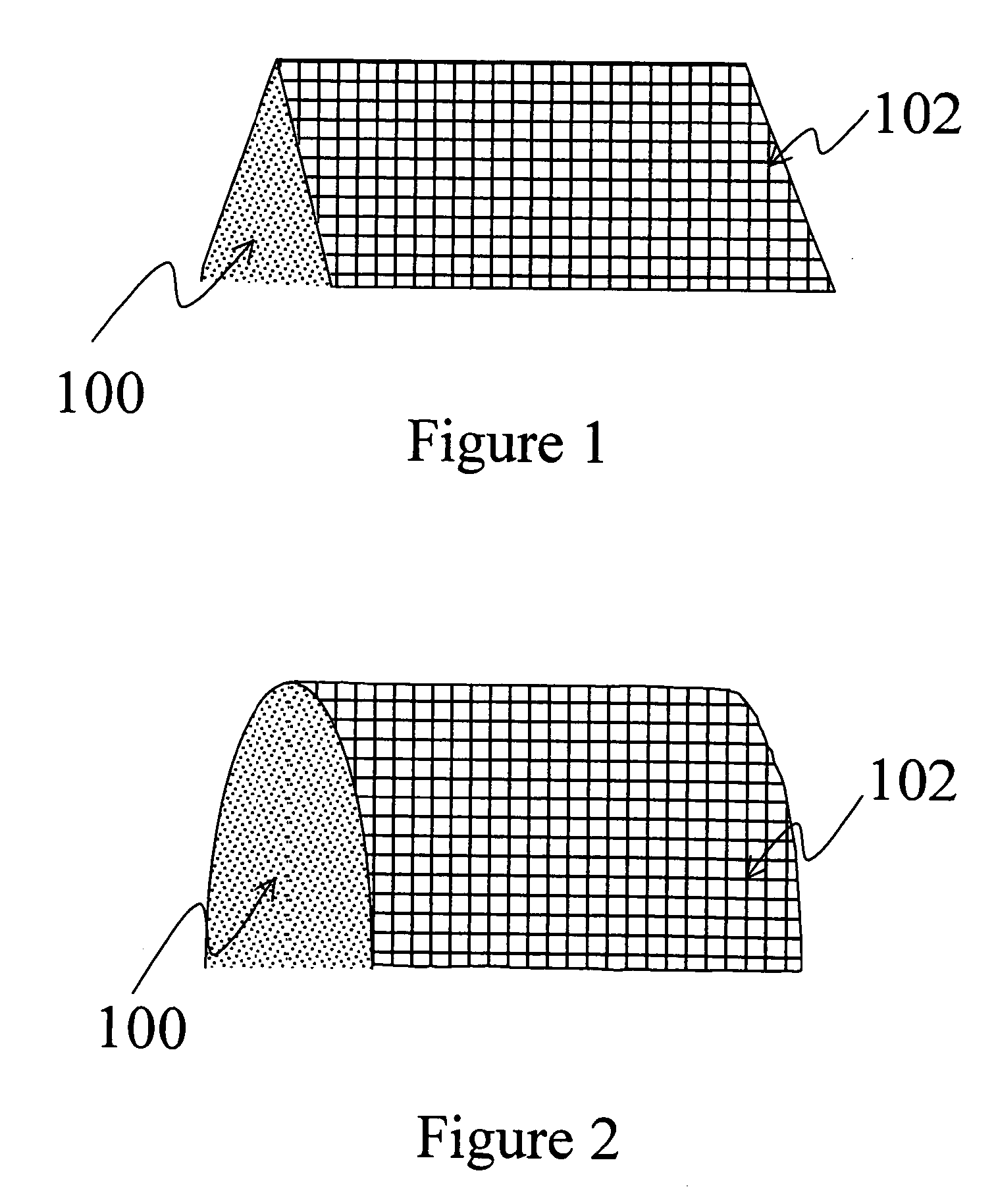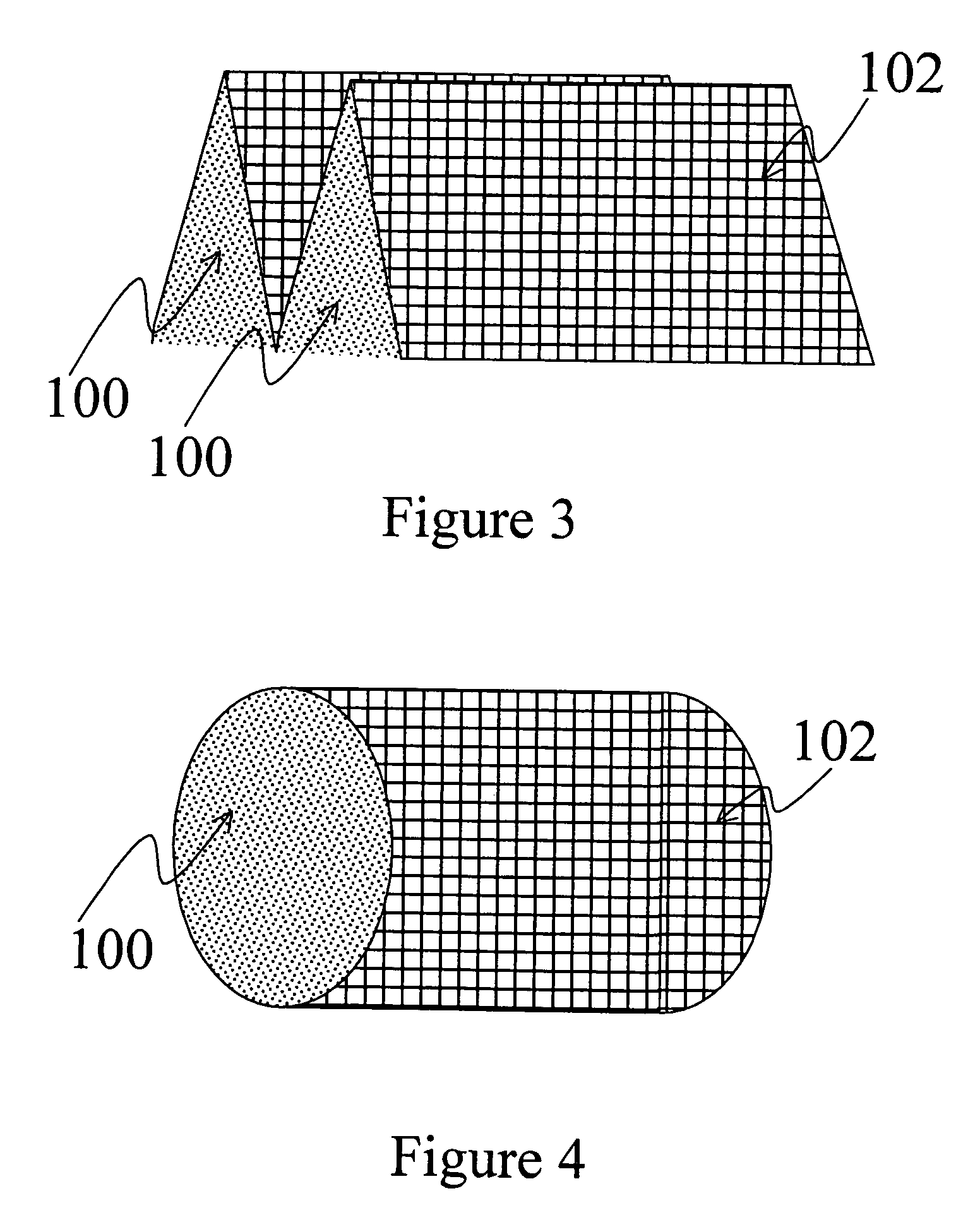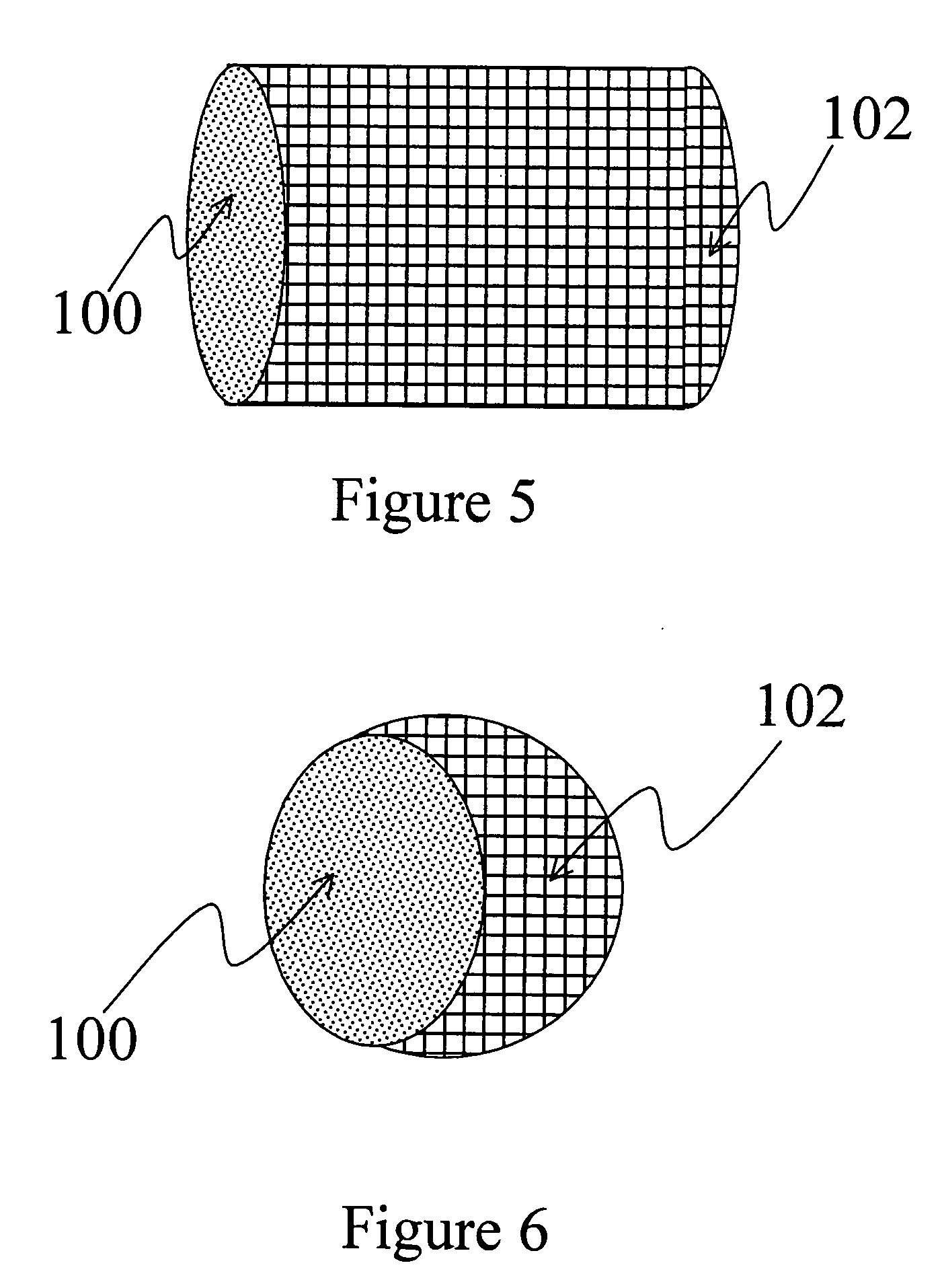Method of making cell growth surface
a cell growth surface and cell technology, applied in the direction of microorganism fixing/supporting apparatus, biochemistry apparatus and processes, microorganism fixing/supporting apparatus, etc., can solve the problems of limiting unable to program degradation, and allowing easy release of cells, etc., to achieve the effect of reducing the mechanical strength of porous alginate carriers, reducing the number of cells to be adhered, and reducing the number of cells to b
- Summary
- Abstract
- Description
- Claims
- Application Information
AI Technical Summary
Benefits of technology
Problems solved by technology
Method used
Image
Examples
example 1
Preparing a Porous Growth Surface
[0058] This example describes the manufacture of representative porous structures of the present invention. The porous structures described in this example are useful as scaffolds for physically supporting the growth of living cells. Material and Methods: PolyPropylene Netting with 1 m / m×1 m / m grid dimension was purchased from local store. Alginic acid powder was purchased from FMC BioPloymer (Philadelphia, Pa. 19103, USA). Calcium chloride was purchased from Sigma-Aldrich(www.sigmaaldrich.com). The netting was cut to 10 cm long×3 cm wide and was folded and heat-annealed to form a 3 dimensional ( ) shape column with width of 1 cm, and height of 3 mm. Alginic acid powder was dissolved in DI water to form 2% (w / v) solution. Place the ( ) shape netting in a container. Pour the alginate solution into the ( ) shape netting and allow the alginate solution to fill inside the netting support. Submerge the netting support containing 2% alginate solution in a...
example 2
[0059] The netting / porous gel pellet was then rinsed with excess DI water containing 100 mM CaCl2, and allowed the pellets to dry. The control group was prepared without adding excess CaCl2 but just rinsed thoroughly with DI water to ensure no free calcium ion remain in the alginate surface and allowed drying. The growth structures were then sterilized under UV for over night.
example 3
Cell Culture
[0060] Prepare Vero cells (ATCC CCL-81) in M199 / 5% FBS. Place each porous alginate pellet in a well of a 12-well plate, seed with 1×105 cells in each pellet and 2 ml culture medium. The calcium ion concentration in the one containing excess CaCl2 was diluted to around 10 mM with the culture medium before culture was initiated. On day 5th, fix the cells in one of the pellet by serial dehydration with 95% ethanol, and stain with Coomassie brilliant blue G. Observe the cell morphology under microscope. Cell morphology is shown in FIG. 8. It shows that Vero cells could propagate in the growth surface of present invention and fully occupy the growth space. In contrast to the control group (as shown in FIG. 9) without excess calcium ion appeared in the alginate pellet or in culture medium, cells are unable to adhere on the growth surface and will aggregate and fail to proliferate.
PUM
| Property | Measurement | Unit |
|---|---|---|
| diameters | aaaaa | aaaaa |
| density | aaaaa | aaaaa |
| diameter | aaaaa | aaaaa |
Abstract
Description
Claims
Application Information
 Login to View More
Login to View More - R&D
- Intellectual Property
- Life Sciences
- Materials
- Tech Scout
- Unparalleled Data Quality
- Higher Quality Content
- 60% Fewer Hallucinations
Browse by: Latest US Patents, China's latest patents, Technical Efficacy Thesaurus, Application Domain, Technology Topic, Popular Technical Reports.
© 2025 PatSnap. All rights reserved.Legal|Privacy policy|Modern Slavery Act Transparency Statement|Sitemap|About US| Contact US: help@patsnap.com



